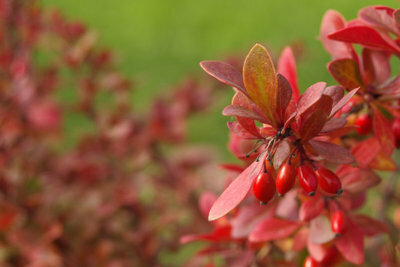Design woody plants as a hedge
Hedges are an attractive alternative to traditional property boundaries such as fences or walls. Especially flowering trees as a hedge are a real eye-catcher. The following instructions are intended to provide you with a little help when designing your hedge.

General information about trees for hedges
- In the case of trees and shrubs for hedges, a distinction is made between loosely growing hedges, consisting of ornamental shrubs and deciduous trees or strict hedges, which either form a boundary due to their growth (columnar shape) or a regular cut, which is the case with woody plants how Conifers and conifers is the case.
- When planting a hedge, you should definitely pay attention to the correct planting distance between the trees in question. The correct distance to the neighboring property is also important. In addition, you have to take into account the demands of the various trees on soil, light and climate.
- In contrast to the evergreen hedge, for example, flowering hedges are an interesting alternative. Just the flowers of elder, Dog rose, willow or sloe and hawthorn are not only beautiful to look at, they are also the habitat of many insects, Birds and small animals. The design options for flowering hedges are very diverse.
Design options for a hedge
- For a flowering hedge, which usually consists of 4 different trees, trees such as forsythia, mahonia, weigela and St. John's wort or hardy fuchsia, blue rue, rose broom and firethorn, but also chokeberry, rose (red fire), beard flower or Mayflower on. Hedges made of dogwood, forsythia, mother-of-pearl and ornamental currant or rock pear, firethorn, ranunculus and weigela are also nice to look at.
- Also free-growing hedges are so-called wild fruit hedges. They only require a waste in height and width. Such hedges usually bear edible fruits and also attract numerous birds into the garden. Examples of such hedges are combinations of sloe, wine rose, rock pear and quince, as well as from Oregon grape, hawthorn, sea buckthorn, barberry and loquat.
- Four-season hedges are particularly popular. A different wood blooms here in every season. For such a hedge, trees such as the snowball and the cornel, which bloom in early spring, are suitable, the forsythia in spring, the summer jasmine, the rock pear and the shrub rose in summer or the privet in winter as well as the Yew. With such hedges, it is advisable to plant the slightly larger trees towards the back and the smaller ones in front.
- For a particularly dense hedge, trees that grow quickly and densely and thus create a dense network in a relatively short time are suitable. These hedges are especially good as wind and wind Privacy screen suitable. Trees that are suitable for such a hedge are, for example, blackthorn, sea buckthorn, Oregon grape, wild rose (Rosa rugosa) or Oregon grape.
- Another interesting design option is a butterfly hedge. As the name suggests, this attracts small moths and butterflies into your garden. Suitable woody plants for this are the sloe, Pastures, Poplar, elm or honeysuckle.
- Fragrant hedges are particularly recommended and an eye-catcher in the garden. Woods like lilac, Butterfly lilac, summer jasmine or wild Roses spread a wide variety of scents during their flowering. Regardless of which wood you choose, you will surely find the right one with the multitude of options.
Planting bushes - this will make your garden opaque
You love your garden as a place of relaxation and tranquility, away from the noisy everyday life, from ...
How helpful do you find this article?



